I'm thrilled to share seven creative ideas for eco-friendly art designs that blend creativity and sustainability. First, I love using upcycled materials, where everyday items transform into unique masterpieces. Natural dyes and pigments from plants add beautiful, organic colors to my work. Eco-friendly sculptures made from biodegradable materials inspire me to connect art with nature. Recycled paper offers wonderful possibilities for crafty creations like origami and mosaics. Community art projects not only beautify spaces but also strengthen connections among people. Each idea speaks to the planet's well-being, and there's so much more to explore!
Key Takeaways
- Upcycle everyday items into unique art pieces using reclaimed wood, showcasing its character and promoting sustainability.
- Utilize natural dyes and pigments from plants, like avocado pits and turmeric, to create vibrant, eco-friendly art.
- Create biodegradable sculptures from clay, wood, and natural fibers that decompose, blending art with environmental responsibility.
- Transform recycled paper into stunning creations, such as origami or mosaics, to reduce waste and encourage creativity.
- Engage in community art projects, like murals and installations, that reflect local culture while fostering collaboration and environmental awareness.
Upcycled Material Masterpieces
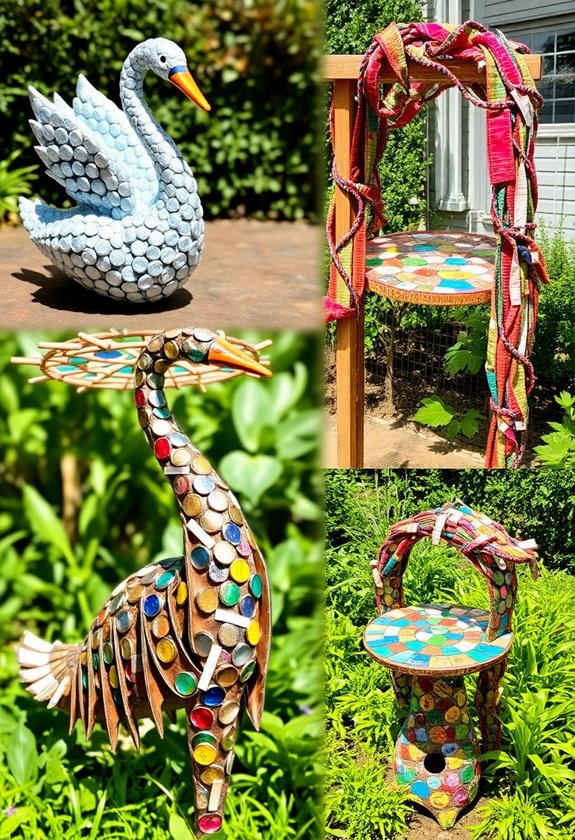
I often find inspiration in the beauty of upcycled materials, transforming everyday items into stunning art pieces. One of my favorite mediums is reclaimed wood, which carries a unique story and character. I've crafted several pieces of upcycled furniture, like a coffee table made from old barn wood. Each scratch and knot adds to its charm, creating a one-of-a-kind statement in any room.
I love the challenge of reimagining what others might consider waste. Upcycling not only breathes new life into these materials, but it also promotes sustainability. I've discovered that combining different textures and colors can yield remarkable results, allowing me to express my creativity while being eco-conscious. It's rewarding to see discarded items become cherished art pieces.
Natural Dyes and Pigments
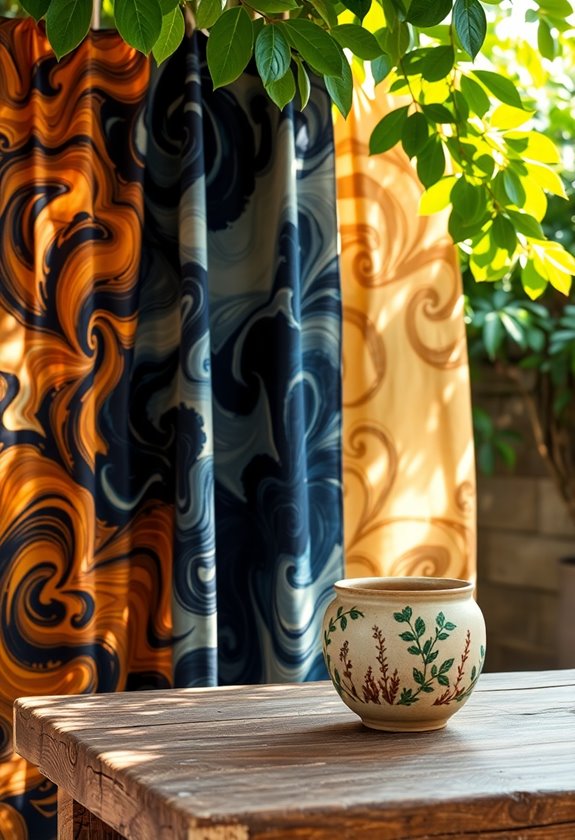
After exploring the transformative potential of upcycled materials, it's fascinating to contemplate how natural dyes and pigments can enhance the artistic journey. Using botanical inks and organic pigments not only promotes sustainability but also connects us deeply to our environment. I love experimenting with colors derived from plants, fruits, and even spices. Each hue tells a story and adds a unique touch to my artwork.
Here's a quick overview of some common natural sources:
| Source | Color Produced |
|---|---|
| Avocado pits | Soft pink |
| Turmeric | Bright yellow |
| Red cabbage | Blue to purple |
| Beetroot | Deep red |
Eco-Friendly Sculptures
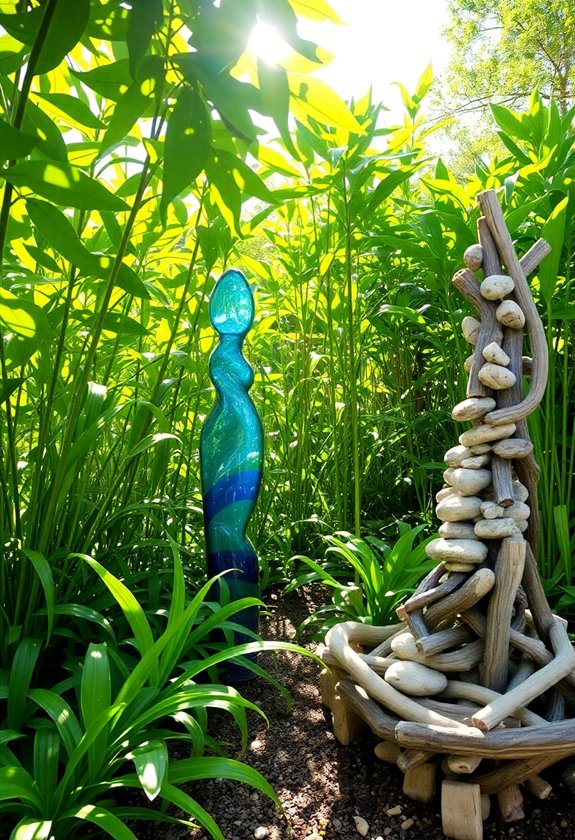
Sculpture, with its three-dimensional form, offers a unique canvas for eco-friendly creativity. I love exploring biodegradable sculptures that blend art with sustainability. These pieces, made from materials like clay, wood, and natural fibers, break down over time, leaving no harmful trace. It's fascinating to think about how art can return to nature.
Kinetic eco art is another exciting avenue I've investigated. These sculptures often incorporate movement and natural elements, like wind or water, to create dynamic experiences. Imagine a sculpture that sways gently in the breeze, promoting awareness of environmental issues. By choosing eco-friendly materials and innovative designs, we can express our creativity while honoring our planet. It's truly a rewarding journey!
Recycled Paper Creations
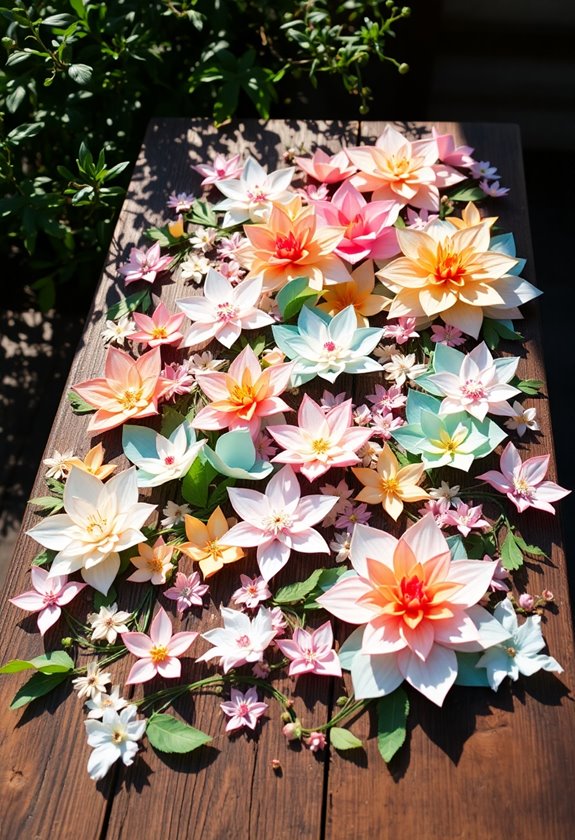
Recycled paper creations serve as a brilliant way to combine artistry with environmental responsibility. I've found immense joy in transforming discarded paper into beautiful works of art. One of my favorite projects involves crafting origami animals; it's amazing how a simple sheet can become a delicate crane or a playful fox. Each fold tells a story, breathing new life into what would otherwise be trash.
I also enjoy creating paper mosaics, where I cut colorful scraps into tiny pieces and arrange them into stunning designs. This technique allows me to experiment with texture and color while promoting sustainability. By using recycled materials, I not only express my creativity but also contribute to reducing waste, making art that's truly meaningful.
Sustainable Canvas Alternatives
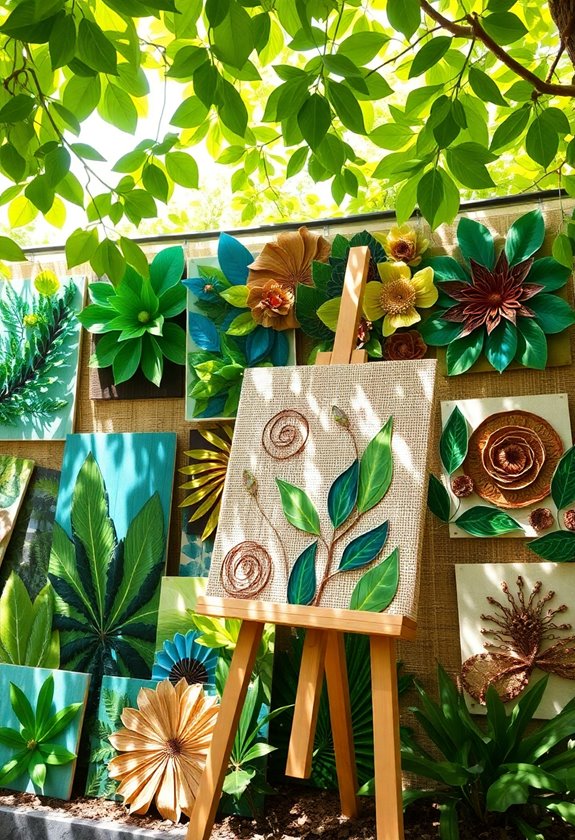
Creativity flourishes when we explore sustainable canvas alternatives that minimize our environmental footprint. Using organic fabric like hemp or cotton can be a game-changer for artists. These materials not only support eco-friendly practices but also provide a unique texture for our art. I've found that biodegradable surfaces, such as bamboo or recycled materials, offer exciting options for creating stunning pieces while reducing waste.
Here's a quick comparison of some alternatives:
| Material | Benefits |
|---|---|
| Organic Cotton | Soft, durable, and eco-friendly |
| Hemp | Strong, requires less water |
| Bamboo | Fast-growing, biodegradable |
Nature-Inspired Installations
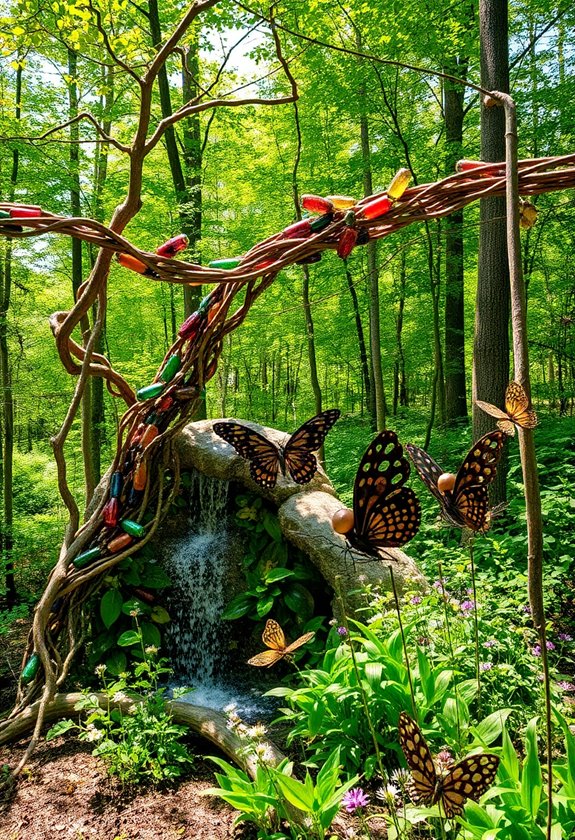
Nature-inspired installations have a unique way of connecting us to the environment around us. They embody biophilic design principles, merging art with nature and enhancing our spaces. Through these installations, I've discovered the power of environmental storytelling to evoke emotions and inspire change. Here are four ideas for creating your own nature-inspired installations:
- Living Walls: Incorporate plants to purify air and add vibrancy.
- Natural Materials: Use wood, stone, and clay to create tactile experiences.
- Soundscapes: Integrate natural sounds like flowing water or birdsong for ambiance.
- Interactive Elements: Encourage visitors to touch or engage with the installation, fostering a deeper connection.
Community Art Projects
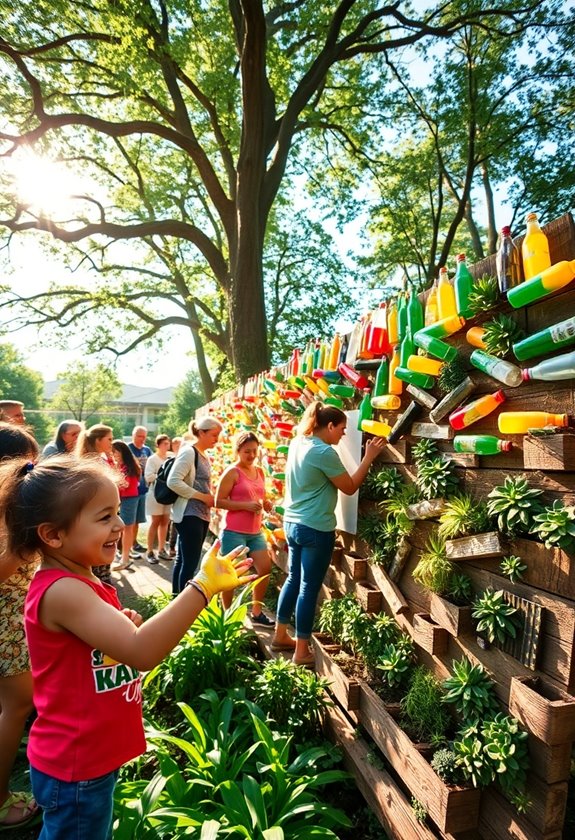
Art has an incredible ability to unite communities and foster a sense of belonging. I've seen firsthand how community murals and collaborative installations can transform public spaces, sparking joy and connection among residents. These projects not only beautify neighborhoods but also encourage teamwork and creativity.
Here's a quick look at some popular community art projects:
| Project Type | Purpose | Benefits |
|---|---|---|
| Community Murals | Reflect local culture | Beautifies spaces |
| Collaborative Installations | Engage artists and residents | Fosters relationships |
| Workshops | Teach skills | Empower participants |
| Public Art Festivals | Celebrate art and culture | Strengthen community ties |
| Youth Programs | Inspire the next generation | Encourage creativity |
Participating in these projects has enriched my life and deepened my connection to my community.
Frequently Asked Questions
What Are the Benefits of Eco-Friendly Art for the Environment?
Imagine Picasso crafting with recycled cans! I believe eco-friendly art benefits the environment by using sustainable materials, reducing waste, and lessening our environmental impact. It inspires creativity while promoting a healthier planet for future generations.
How Can I Start Creating Eco-Friendly Art at Home?
I started creating eco-friendly art at home by using recycled materials like old magazines and cardboard. I also explored sustainable techniques, like natural dyes, to make my projects environmentally friendly and unique. You can too!
Are There Any Eco-Friendly Art Supplies I Should Avoid?
When I stumbled upon toxic materials in my art supplies, it felt like finding weeds in a garden. I now avoid synthetic paints and plastics, focusing instead on sustainable sourcing for a healthier creative space.
Can Eco-Friendly Art Be Profitable for Artists?
I've found that incorporating sustainable practices not only resonates with my values but also meets market demand. Eco-friendly art can attract a loyal customer base, making it both fulfilling and profitable for artists like me.
How Do I Find Local Eco-Art Communities or Workshops?
I stumbled upon an amazing art community event last month, discovering local sustainable art initiatives. I'd suggest checking social media, community boards, or local galleries to find workshops and connect with like-minded eco-art enthusiasts.
